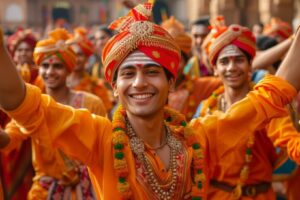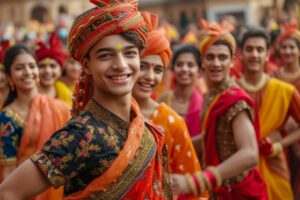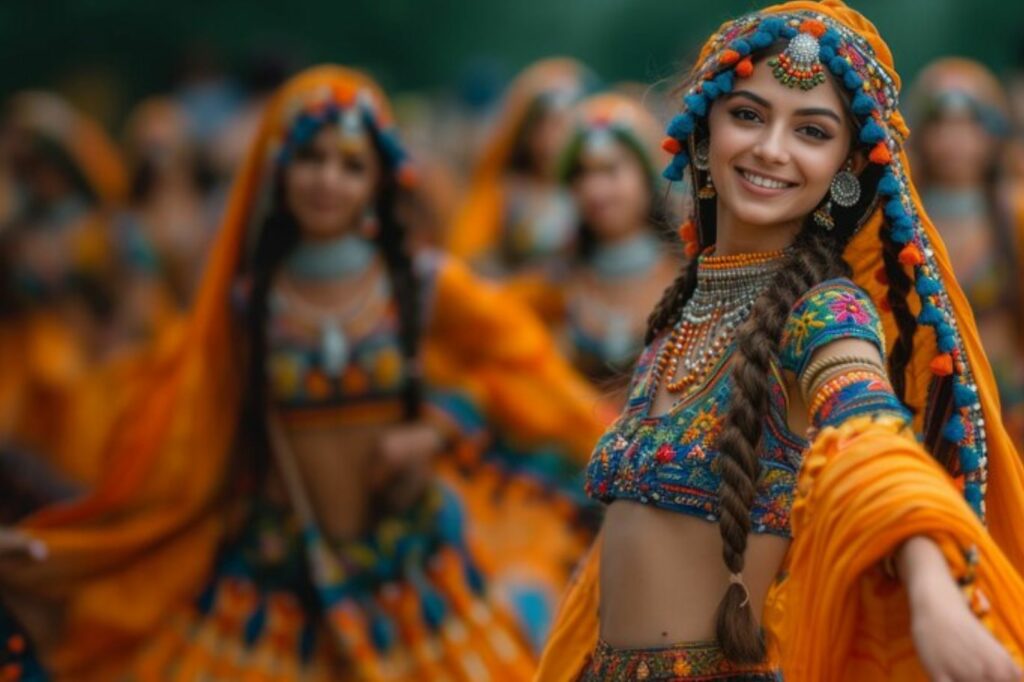Bengali culture, with its rich tapestry of traditions, art, and cuisine, has been making waves across America. As Bengali communities establish themselves in various cities, they’re not just preserving their heritage but also sharing it, adding vibrant colors to the American cultural landscape. From the rhythmic beats of Rabindra Sangeet to the mouthwatering aroma of biryani, Bengali culture offers a feast for the senses.
In cities like New York and San Francisco, Bengali festivals such as Durga Puja and Pohela Boishakh are celebrated with grandeur, drawing crowds from diverse backgrounds. These events serve as a bridge, fostering understanding and appreciation among different cultures. As the younger generation of Bengali-Americans grows up, they’re blending traditional customs with modern American life, creating a unique cultural fusion that’s both intriguing and inspiring. This cultural exchange enriches communities, highlighting the beauty of diversity in America.
Bengali Culture in America

Bengali migration to America began in the 19th century when a small number of immigrants arrived seeking educational and economic opportunities. By the 1960s, a noticeable wave of Bengali professionals and academics moved to the United States, spurred by changes in immigration policies, including the Immigration and Nationality Act of 1965. This act eliminated previous quotas and opened pathways for skilled workers from countries like Bangladesh and India.
In the following decades, Bengali communities grew significantly, particularly in cosmopolitan cities such as New York, Los Angeles, and Chicago. These communities formed cultural organizations and associations, fostering a sense of identity and support among Bengali-Americans.
By the late 20th century, Bengali culture had become more visible, with increased participation in broader cultural phenomena such as multicultural festivals and media production. This period marked the rise of notable Bengali-Americans contributing to various fields including academia, entertainment, and politics, further integrating Bengali culture into the American social fabric.
Bengali Immigration to America
Bengali immigration to America showcases a rich tapestry of history and evolving trends. Initial movers sought opportunities, while recent arrivals add layers to the cultural landscape.
Early Waves of Immigration

Bengali immigration began in the 19th century with individuals pursuing education and economic prospects. During this period, students and professionals traveled to American universities and industries, laying the groundwork for later waves. The Immigration and Nationality Act of 1965 catalyzed a surge of Bengali professionals seeking new opportunities. These early immigrants settled in cosmopolitan hubs like New York, Los Angeles, and Chicago, where cultural organizations emerged to maintain heritage and offer community support. Activities such as symposiums and literary gatherings preserved the Bengali language and traditions, fostering cultural continuity.
Recent Trends and Patterns

In recent years, Bengali immigration trends have evolved, with increasing numbers of tech professionals, students, and entrepreneurs making the move. This influx reflects the growing demand for skilled workers in the US tech industry, particularly in Silicon Valley and other tech-driven regions. Family reunification has become a significant factor, expanding established communities. The newer generation of immigrants actively participates in cultural events, blending traditional customs with contemporary American society.
Community and Social Organizations
Bengali culture in America is actively supported by various community and social organizations. These groups play a vital role in maintaining cultural ties and fostering relationships within the larger American society.
Bengali Associations and Clubs
Bengali associations and clubs in America provide a sense of community and belonging. Cities like New York, Los Angeles, and Chicago host several Bengali organizations that offer social, educational, and cultural support. They organize events like literary gatherings and music festivals that preserve Bengali traditions and promote community involvement.
Role in Promoting Cultural Awareness

These organizations actively promote cultural awareness by hosting events open to the wider community. Festivals such as Durga Puja and Pohela Boishakh not only attract Bengali-Americans but also invite participation from those interested in learning about Bengali culture. Through exhibitions and performances, these events showcase aspects of Bengali heritage, fostering mutual appreciation and understanding.
Maintaining Cultural Identity
Bengali culture in America thrives through a dynamic blend of tradition and modernity, enriching the nation’s multicultural tapestry. With vibrant festivals, rich culinary offerings, and active community organizations, Bengali-Americans continue to preserve their heritage while embracing new cultural influences. This cultural fusion not only strengthens community bonds but also fosters greater understanding and appreciation among diverse groups. As Bengali-Americans navigate their unique identities, they contribute significantly to the broader American cultural landscape, highlighting the beauty and strength found in diversity.

